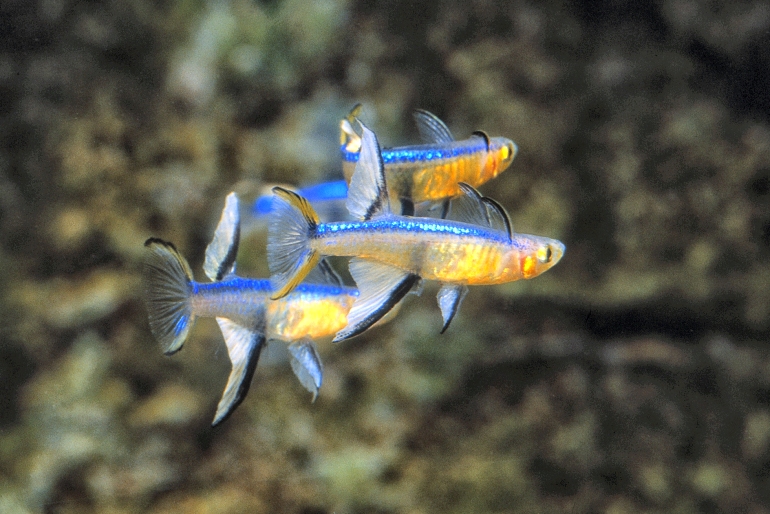From the Humane Society of the United States (HSUS)
Moving to a new home can be a stressful time for a little fish, but with some care and preparation, your finned friend will be happy and healthy in his new home in no time.
Supersize me
Fish need room to swim—would you be happy living in a tiny bowl? The HSUS recommends at least a 20-gallon [76 litre] tank for first-time fish owners. It might seem like taking care of a smaller tank would be easier, but that’s a myth: it’s actually easier to keep the water clean with a larger tank with a filter.
Setting up tank early
You might be eager to set up tank the day you bring your new fish home, but in reality, it’s very important to give the tank time to become established before adding fish.
Fill your new tank with clean tap water and test the water pH with a kit from a pet supply store, specialty store or online retailer. Most fish do best with a balanced pH (7), but some fish do best with more acidic or basic water. Let the new tank sit for at least a week before adding the first fish. This will give the water time for impurities to dissipate and gives you time to make sure that everything works as it should.
Before putting the gravel in the tank, rinse it clean with water. Add one pound of gravel per gallon of water in the tank.
Set up your tank against an inside wall and away from windows, doors, direct sunlight, vents, and other sources of drafts to ensure that the water temperature stays constant. You can also purchase a tank thermometer to make sure the water stays at the right temperature.
Accessories and gravel
Provide a light source for your fish by adding a fluorescent light to your tank. Many tank lids have lights built in. A good rule of thumb is to have the light on half the day and off half the day (12 hour intervals).
Keep a hood or canopy over the tank. Some fish are jumpers, and you want to make sure that they stay safe and sound in the tank. This is especially important if you have curious cats in the house.
Fish love to play hide-and-seek, so make sure that you give them a place to hang out and hide, like plastic sea plants or a ceramic sea castle.
Filters
Without filtration, fish waste can poison the water in your tank. Invest in a high-quality filtration system. Choose a filter that is sized for your specific tank, or buy a filter rated for a larger size tank than the one you have. Follow the filter manufacturer’s instructions and change the filter according to the manufacturer’s instructions.
Welcome home!
When you bring home your fish, he’ll likely be in a small plastic bag. Float the bag in the tank for about a half-hour to regulate the water temperature, then open the bag and let your friend check out his new digs. You can add more fish every couple of weeks if you like. We recommend three or four small fish or one or two medium fish for a 20-gallon aquarium.
Why can’t we be friends?
Fish are like people—not all get along, and not all like the same living environment. Make sure you choose compatible fish that can tolerate the same water temperature and conditions. We recommend three or four small fish or one or two medium fish for a 20-gallon aquarium.
Cleaning time
Remove uneaten food and waste with a net every other day. If the water looks cloudy, it’s time to filter or change the water. Use a filtered siphon (which can be purchased at pet stores) to change 20 percent of the water every 10 days. Take out several gallons of water from the tank and replace it with clean, pre-aged water every week to remove chemical build-up that your filter leaves behind. Test the water quality with a kit, and scrape any algae build-up.
Before putting the gravel in the tank, rinse it clean with water. Add one pound of gravel per gallon of water in the tank.
Set up your tank against an inside wall and away from windows, doors, direct sunlight, vents, and other sources of drafts to ensure that the water temperature stays constant. You can also purchase a tank thermometer to make sure the water stays at the right temperature.


![Melanotaenia fluviatilis [Murrumbidgee River] - photo © Gunther Schmida](http://rainbowfish.angfaqld.org.au/M.fluviatilis%20(Murrumbidgee%20River)%20GES.jpg)
Sorry, the comment form is closed at this time.